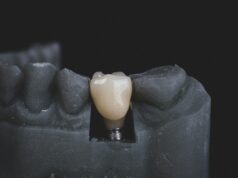The tummy tuck, also known as the abdominoplasty, has become one of the most popular cosmetic procedures around, but did you know this procedure has actually been around since the late 1800’s?
Thankfully, the techniques and tools used in practice have come a long way, and the procedure no longer leaves patients without a belly button.
Here, leading consultant plastic surgeon, Hagen Schumacher from Adore Life outlines exactly how tummy tuck techniques and results have changed and improved over the years.
1800’s
The 1800’s saw the birth of the tummy tuck, but it definitely wasn’t the tummy tuck we know today, and it often left patients without a belly button.
The main purpose of these early tummy tucks was to remove excess skin from the abdominal area to cover up open wounds.
Hagen Schumacher comments: “As you can imagine, back in the 1800’s because this surgery was used to help the critically injured, it didn’t focus on cosmetics and surgeons believed it was nearly impossible to perform a tummy tuck and keep the belly button intact.
Fortunately, this changed relatively quickly, and by the early 20th century, we started to see the makings of the tummy tuck we know today.”
1900’s
In 1905, plastic surgeons in France discovered a way to make the tummy tuck procedure smoother, and a lot more sophisticated, whilst leaving the bellybutton intact.
They discovered that by simply changing the incisions, they could preserve the belly button and make the overall process much smoother for both the patient and the surgeon.
“By using vertical and horizontal incisions to create small flaps, rather than creating one large horizontal incision across the entire abdomen surgeons were able to leave the bellybutton intact.
However, it was still not a very common procedure and again was primarily used to treat wounds during the first World War.
The modern version of tummy tucks was popularised by Brazilian plastic surgeon, Ivo Pitanguy in 1967 who used it initially to treat hernias, which resulted in a bulging belly.
It then became the cosmetic procedure of choice for recontouring the abdomen. Doctors began to realise that the procedure resulted in a smoother, tighter appearance of the abdomen, therefore paving way for the modern tummy tuck techniques we see today.
Today
The tummy tuck has come a long way since the 1800’s. Not only is the procedure much safer, with better results – it has also dramatically cut down on healing and recovery time.
Here are just a few notable advancements in the modern tummy tuck.
Drain-Free Tummy Tuck
“More traditional versions of the tummy tuck use a drain to prevent internal fluid build-up (or “seroma” in medical terms) both during and after surgery. However, this makes for a very complicated recovery, and the patient will need to empty the contents of the drain regularly before it is removed which is a highly unpleasant experience.
The drain-free tummy tuck relies on less undercutting of the skin and uses a layered suture technique, which eliminates the need for surgical and post-surgical drains by leaving minimal extra space for fluid to build up. The result, a less complicated recovery.”
The Mini Tummy Tuck
“Previously, no matter how much excess skin you had, you would have to undergo a full tummy tuck in which to remove skin between the pubic hairline and the belly button. Now, we can perform the mini tummy tuck, also known as the partial abdominoplasty, where plastic surgeons use a much smaller incision to tighten small amounts of excess skin below the belly button.”
Mummy Makeover
Modern day tummy tucks are also used alongside other cosmetic producers, including breast augmentation and liposuction for the ‘mummy makeover’ which restores the shape and appearance of the body following childbirth.
“A skilled plastic surgeon can perform multiple procedures at once. This means the patient will only require general anaesthesia once and have one single recovery period. However, because of the longer operating time, there is also an increased risk of complications.”
Belt lipectomy or 360°
“This revision of the tummy tuck not only smooths the tummy, but also lifts the thighs and buttocks. The tummy tuck scars are extended all the way around the back resulting in the removal of a belt-shaped strip of skin and fat that is often difficult to lose through diet and exercise.”
Advancements in tools and techniques have paved the way for the tummy tuck we know today. Now the tummy tuck is one of the most common procedures in cosmetic surgery, and it can be customised to meet the patients’ specific needs and goals.












